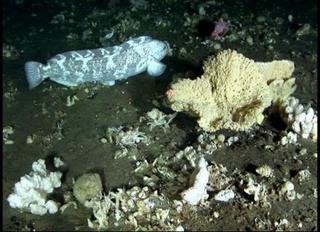Research on Bering Sea Canyons Sheds Light on Coral's Role in Ecosystem

Thursday, March 29 2012
Using a tiny submarine, a group of scientists have finally been able to get a good look of what actually goes on in the Bering Sea’s canyons. In the process, they discovered a new species of sponge and got a better idea of how deep-sea corals serve as a habitat for some of Alaska’s commercial fisheries.
The National Oceanic and Atmospheric Administration, the University of California Santa Barbara, and Greenpeace undertook the project. John Hocevar, who is Greenpeace’s Oceans Campaigner and one of the lead authors of the study. He says that the research was important because little is known about how the canyon’s corals fit into the ocean ecosystem.
“The corals can be as tall as a person, and they’re often hundreds or even thousands of years old,” says Hocevar. “And in areas like the canyons, the corals and to a lesser extent sponges, provide the only real three-dimensional structure for fish and other marine life to hide and forage around.”
The researchers centered their work in Pribilof and Zhemchug Canyons, which reach depths of over a mile. The team would send down individuals in DeepWorkers submersibles, submarines that are about the size of a golf cart and susceptible to squid attacks. During the 16 dives they made, the scientists analyzed the canyon’s marine life by getting footage with high-definition cameras and taking samples with robotic arms.
In the process, team made two significant discoveries. They identified a new species of sponge that has been named “Aaptos kanuux,” an amalgam of Greek and Unangan words that means “heart sponge.” Additionally, the researchers also saw areas of the canyons that they say had been impacted by commercial fishing. According to the National Marine Fisheries Service, between 50 and 100 tons of coral are removed from Alaska’s sea floor annually because of commercial fishing. A presentation of the research and commercial fishing’s effect on the canyons will be given at this week’s meeting of the North Pacific Fishery Management Council.
Correction: An earlier version of this story said that NOAA estimates 80 million metric tons of coral are removed from Alaska's sea floor annually. That figure is incorrect, and the story has been updated to reflect the correct numbers.



